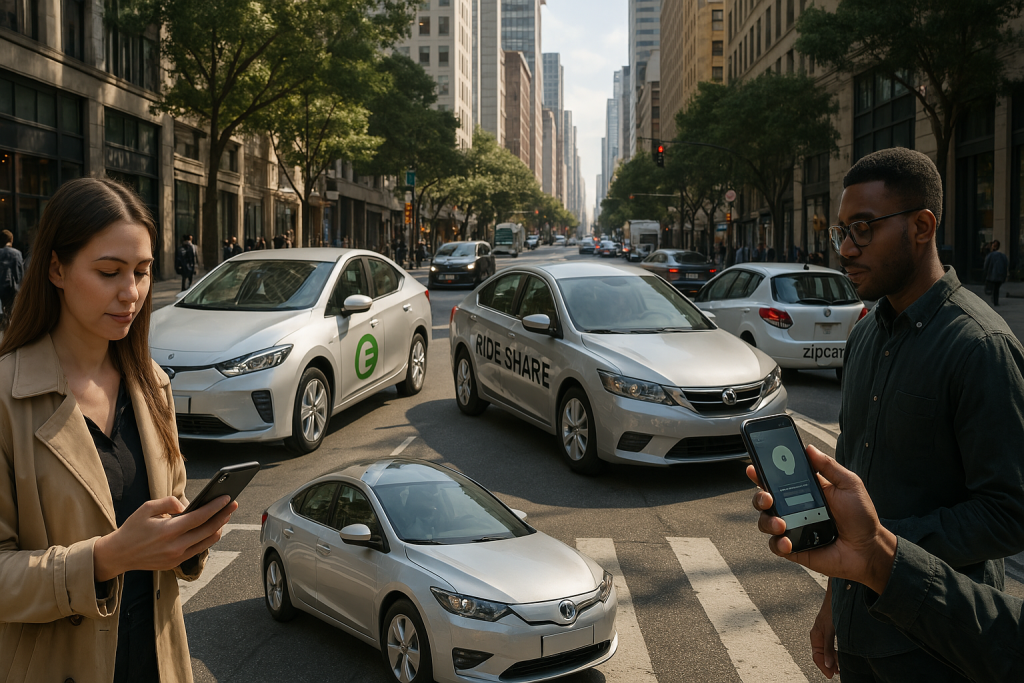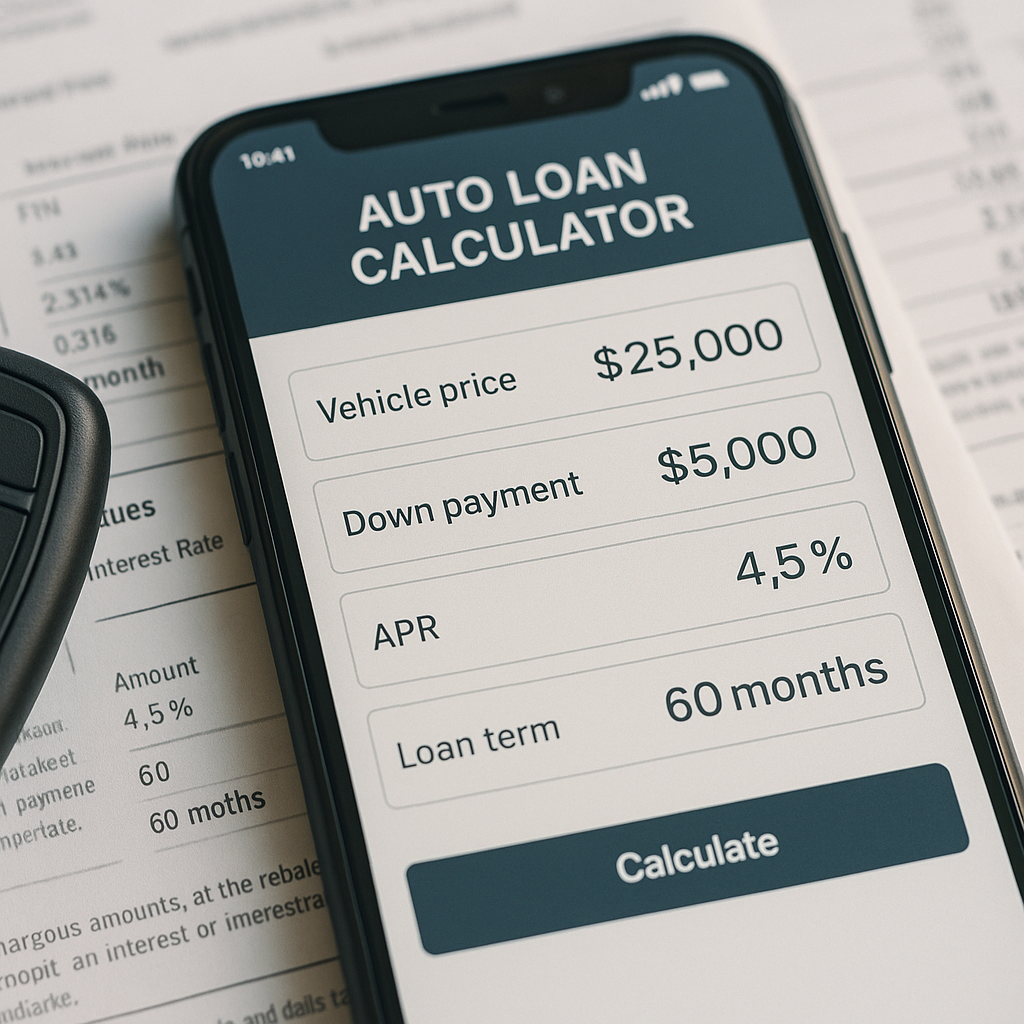From the first steam-powered vehicles to the sleek electric cars of today, the automobile has played a pivotal role in shaping modern society. Cars have not only made transportation faster and more efficient but also influenced how we live, work, and interact with the world. In this post, we’ll explore how automobiles have transformed our lives and work, from personal freedom to economic shifts, and even their impact on the environment.
Table of contents
- 1. The Rise of Automobile Transportation
- 2. Shaping Modern Mobility
- 3. Changing the Workplace
- 4. The Economic Impact
- 5. Environmental Impact and Sustainability Challenges
- 6. The Future of Mobility
- Conclusion
- Frequently Asked Questions: How Automobiles Have Changed the Way We Live and Work
- 1. The Impact of Cars on Personal Mobility
- 2. The Role of Ford in Making Cars Accessible
- 3. The Rise of Suburban Living and Urban Expansion
- 4. Shaping Modern Work Culture and Commuting
- 5. Job Creation in the Automotive Industry
- 6. The Global Economic Impact of Automobiles
- 7. The Environmental Impact of Cars
- 8. The Shift Toward Electric and Hybrid Vehicles
- 9. The Emergence of Autonomous Vehicles
- 10. The Evolution of Shared Mobility and Car Ownership
1. The Rise of Automobile Transportation
The history of the automobile dates back to the late 19th century, when pioneers like Karl Benz and Henry Ford began experimenting with engines and wheels. However, it wasn’t until the early 20th century that mass production methods, notably introduced by Henry Ford, made cars affordable and accessible to the general public.
The automobile’s mass adoption not only changed transportation but also fueled urban growth. Cities expanded, and the need for better infrastructure, such as roads, highways, and parking facilities, became essential. As cars became more common, so did the expectations of personal mobility, ushering in a new era of convenience and freedom.

2. Shaping Modern Mobility
Personal Freedom
One of the most profound impacts of automobiles is the freedom they provide. For the first time, people could travel greater distances at their own pace. This personal freedom has allowed families to explore new areas, take vacations, and make long-distance commutes a part of everyday life.
Cars have also revolutionized how we interact with our communities. The once-limited nature of neighborhood interactions expanded as people could now drive to visit friends, run errands, or attend social events, all without being dependent on public transport or the limitations of local geography.
Urban Development
As cars became more accessible, so did the development of suburban areas. The ability to commute long distances efficiently allowed people to move out of crowded urban centers and settle in quieter suburban communities. This shift changed not only where people lived but also how cities grew. The automobile influenced urban sprawl, necessitating the construction of new roads, bridges, and highways to accommodate increased traffic.
3. Changing the Workplace
Commuting and the 9-5 Workday
With the advent of automobiles, commuting became a daily part of the work culture. Employees could now access jobs in distant areas that were previously unreachable by walking or public transit. The rise of the 9-5 workday is tied to the widespread availability of cars, which made it easier for people to get to work on time and allowed businesses to operate across wider geographic areas.
However, longer commute times have also had an impact on work-life balance. People now spend hours each day traveling to and from work, which has led to growing concerns about the impact of commuting on mental health, productivity, and quality of life.
Business and Logistics
Automobiles have revolutionized the way businesses operate, particularly in logistics and supply chains. Trucks and delivery vehicles have made it possible to transport goods quickly and efficiently, leading to the rise of global trade and retail. From food delivery services to e-commerce, the automobile industry plays a significant role in keeping economies running.
Moreover, cars are critical in the transportation of raw materials, components, and finished products across the globe. The automobile is at the core of the globalized supply chain that powers modern commerce.
Remote Work and Mobility
The advent of automobiles has made the possibility of remote work and flexible job arrangements more viable. Employees can now travel easily between different workspaces, whether it’s a co-working space, a home office, or a traditional workplace. The flexibility to work from different locations, combined with advances in digital technology, has blurred the lines between work and home, creating more dynamic and mobile work environments.
4. The Economic Impact
Job Creation
The automobile industry has created millions of jobs worldwide, both directly and indirectly. From car manufacturers to mechanics, drivers, salespeople, and insurance agents, the automobile sector supports a vast array of occupations. The industry’s ability to foster job creation has been crucial to many economies, particularly in manufacturing-heavy regions like the United States, Germany, and Japan.
Additionally, the automotive industry has led to the creation of countless supporting industries such as fuel production, auto parts manufacturing, and repair services, contributing significantly to global economic growth.
Automobile’s Contribution to the Global Economy
The global economy has been deeply shaped by the automobile industry. Not only does the sector contribute directly to GDP, but it also supports ancillary industries like steel production, electronics, and software development. The rise of electric vehicles (EVs) and autonomous driving technologies represents the next frontier of automotive innovation, ensuring that the automobile sector will continue to be a cornerstone of economic activity for years to come.
5. Environmental Impact and Sustainability Challenges
While automobiles have brought undeniable benefits, they’ve also introduced significant environmental challenges. The widespread use of gas-powered vehicles has contributed to air pollution, rising greenhouse gas emissions, and resource depletion. The automotive industry is responsible for a large portion of global carbon emissions, which has spurred a movement towards greener alternatives.
The shift to electric vehicles (EVs) is one of the most significant changes in the automotive landscape. EVs have the potential to drastically reduce the environmental footprint of personal transportation. In addition, hybrid cars and hydrogen-powered vehicles are emerging as sustainable solutions to mitigate the environmental damage caused by traditional vehicles.
However, the transition to sustainable mobility is not without its challenges. The production of batteries, the disposal of old vehicles, and the reliance on rare-earth minerals are all issues that need to be addressed for a truly green automotive future.

6. The Future of Mobility
The future of mobility is on the brink of dramatic transformation, driven by technological advancements that promise to reshape how we interact with transportation. Key innovations like autonomous vehicles (AVs), shared mobility services, and smart cities are converging to make transportation safer, more efficient, and sustainable. Let’s explore how these changes will affect the way we live and work.
Autonomous Vehicles (Self-Driving Cars)
Self-driving cars, once a concept of science fiction, are now a tangible reality thanks to rapid advancements in artificial intelligence (AI), machine learning, and sensor technologies. Autonomous vehicles (AVs) are designed to operate without human intervention, using complex algorithms, radar, lidar, and cameras to navigate roads, detect obstacles, and make real-time decisions.
The widespread adoption of AVs has the potential to significantly reduce traffic accidents. According to studies, a majority of traffic accidents are caused by human error, and with AVs, these errors could be virtually eliminated, resulting in fewer collisions and less severe injuries. Additionally, autonomous vehicles have the potential to ease traffic congestion by using AI to optimize driving patterns and traffic flow, reducing the overall time spent on the road.
One of the most exciting possibilities of AVs is their potential to increase mobility for individuals who cannot drive, such as the elderly, people with disabilities, and those who do not have access to a vehicle. Autonomous cars could provide them with the freedom and independence that traditional vehicles may not offer.
The rise of AVs could also drastically alter the workforce. Professional drivers, such as taxi drivers, truck drivers, and delivery personnel, could face significant disruptions. However, it’s also expected that new industries and job roles will emerge in response to the rise of autonomous vehicles, such as AV maintenance and monitoring systems, and roles in the development of AV technology.
Shared Mobility
The concept of car ownership is evolving. For many years, owning a car was seen as a symbol of independence and success, but this is changing, especially in urban environments. Today, ride-sharing services like Uber and Lyft, along with car-sharing platforms like Zipcar, are challenging the traditional notion of car ownership.
These services provide users with flexible, on-demand access to vehicles, eliminating the need to commit to long-term ownership and the associated costs, such as insurance, maintenance, and parking. For people living in cities where traffic congestion and parking can be major issues, shared mobility offers a convenient alternative to owning a car.
By reducing the overall number of privately owned cars, shared mobility services can contribute to fewer vehicles on the road, which in turn helps reduce emissions, lowers urban congestion, and decreases the demand for parking spaces. Shared mobility services also have the potential to make urban living more sustainable, as fewer resources are required for the maintenance and infrastructure needed to support private car ownership.
Additionally, the rise of electric vehicles (EVs) within shared mobility fleets is a key driver in reducing the carbon footprint of transportation. As more cities focus on sustainability and reducing emissions, electric ride-sharing and car-sharing options are becoming increasingly popular.
Integration with Smart Cities
As the world moves toward greater urbanization, the concept of “smart cities” is gaining momentum. Smart cities leverage advanced technologies, including the Internet of Things (IoT), to enhance the quality of life for residents and improve the efficiency of urban infrastructure. Within this context, automobiles will play a central role in creating more efficient and connected transportation networks.
Smart cities use connected infrastructure, such as sensors and data analytics, to optimize traffic flow, reduce congestion, and enhance safety. For example, traffic lights can adapt in real-time to traffic patterns, prioritizing emergency vehicles or adjusting to the flow of commuters during rush hours. Vehicles can also communicate with traffic signs, roadways, and other vehicles, exchanging information to avoid accidents, optimize routes, and manage traffic more effectively.
Vehicle-to-vehicle (V2V) communication is one of the key technologies that will define the future of mobility. This system allows cars to share information with one another, such as speed, location, and road conditions, enabling them to anticipate potential hazards and adjust their driving behavior accordingly. V2V communication could dramatically reduce accidents, improve road safety, and help prevent traffic jams.
Smart cities are also integrating electric vehicle charging infrastructure into their urban planning. This helps promote the adoption of EVs by providing convenient charging stations in high-traffic areas. Combined with the widespread availability of shared EV services, this makes it easier for people to access sustainable transportation options.
Conclusion
Automobiles have fundamentally changed the way we live and work. They have granted us unprecedented mobility, fueled economic growth, and reshaped the modern workplace. While the environmental impact remains a challenge, ongoing advancements in green technology, autonomous driving, and shared mobility are driving us toward a more sustainable future.
As we look to the future, the automobile will continue to evolve, influencing everything from urban planning to how we work and connect with others. The journey is far from over, and the next chapter in the story of automobiles promises to be just as transformative as the past.
Frequently Asked Questions: How Automobiles Have Changed the Way We Live and Work
1. The Impact of Cars on Personal Mobility
How have automobiles changed personal transportation?
Automobiles have significantly increased personal mobility, allowing individuals to travel farther and faster than ever before. Cars provide greater independence, eliminating dependence on public transportation and enabling people to travel for leisure, work, and daily activities.
2. The Role of Ford in Making Cars Accessible
What role did Henry Ford play in the rise of the automobile?
Henry Ford revolutionized the automobile industry by introducing the assembly line, making car production more efficient and affordable. This allowed for the mass production of vehicles, which made cars accessible to a larger population, fundamentally changing transportation for the average person.
3. The Rise of Suburban Living and Urban Expansion
How have cars influenced urban development and suburban living?
Cars have played a major role in the growth of suburban areas by allowing people to live farther from city centers while still commuting to work. This has led to the expansion of cities into sprawling suburban areas, transforming the landscape of modern urban life.
4. Shaping Modern Work Culture and Commuting
In what ways have automobiles impacted the workplace and commuting?
Automobiles have made commuting a daily routine, leading to the widespread adoption of the 9-to-5 work schedule. Cars have also made it easier for employees to access jobs in different geographic locations, contributing to the rise of long-distance commuting and changes in work culture.
5. Job Creation in the Automotive Industry
How has the automobile industry contributed to job creation?
The automobile industry has created millions of jobs globally, from manufacturing and assembly line work to sales, repair, and insurance. It also supports numerous ancillary industries, such as fuel production and auto parts manufacturing, contributing to economic growth in many regions.
6. The Global Economic Impact of Automobiles
What is the economic significance of the automobile industry?
The automobile industry is a cornerstone of the global economy, contributing significantly to GDP in countries around the world. Beyond car manufacturers, industries like logistics, retail, and insurance are all deeply interconnected with the success of the automotive sector.
7. The Environmental Impact of Cars
How have automobiles affected the environment?
Automobiles, particularly those running on fossil fuels, have contributed to pollution, air quality issues, and climate change through their emissions. This has spurred the need for cleaner technologies and environmental reforms, such as electric vehicles (EVs) and the development of green automotive solutions.
8. The Shift Toward Electric and Hybrid Vehicles
What is the future of sustainable automobiles?
Electric vehicles (EVs) and hybrid cars are becoming increasingly popular as environmentally friendly alternatives to traditional gas-powered vehicles. These innovations aim to reduce carbon emissions and dependence on fossil fuels, signaling a shift toward more sustainable transportation solutions.
9. The Emergence of Autonomous Vehicles
How will self-driving cars change the future of transportation?
Autonomous vehicles (AVs) are set to revolutionize transportation by improving safety, reducing traffic, and increasing mobility for those unable to drive. They could also lead to changes in the workforce, particularly for professional drivers, and pave the way for a more connected and efficient transportation system.
10. The Evolution of Shared Mobility and Car Ownership
How has the rise of ride-sharing affected car ownership?
Ride-sharing services like Uber and Lyft have shifted the way people view car ownership. Many individuals, particularly in urban areas, are opting for these services instead of owning a car, reducing the overall number of vehicles on the road and leading to a more sustainable model of transportation.




3 thoughts on “How Automobiles Have Changed the Way We Live and Work”
u1571c
aay63j
2sf28h